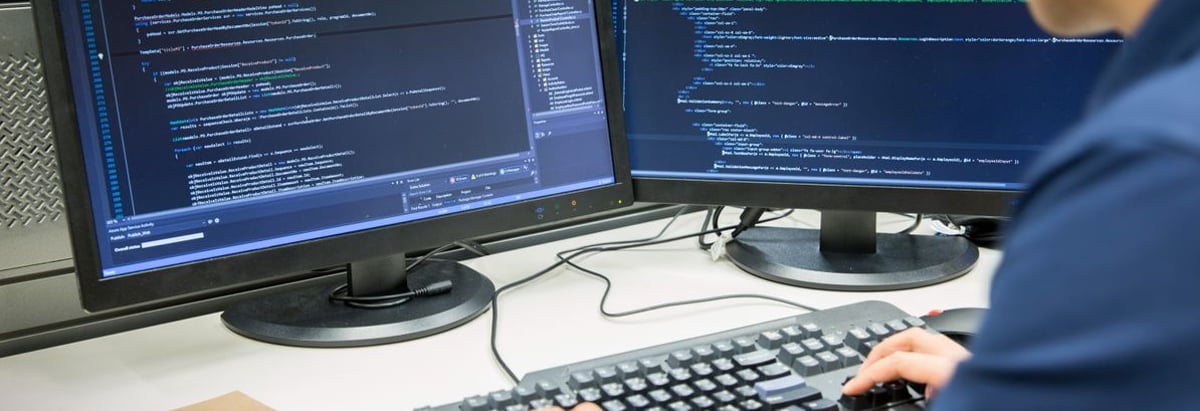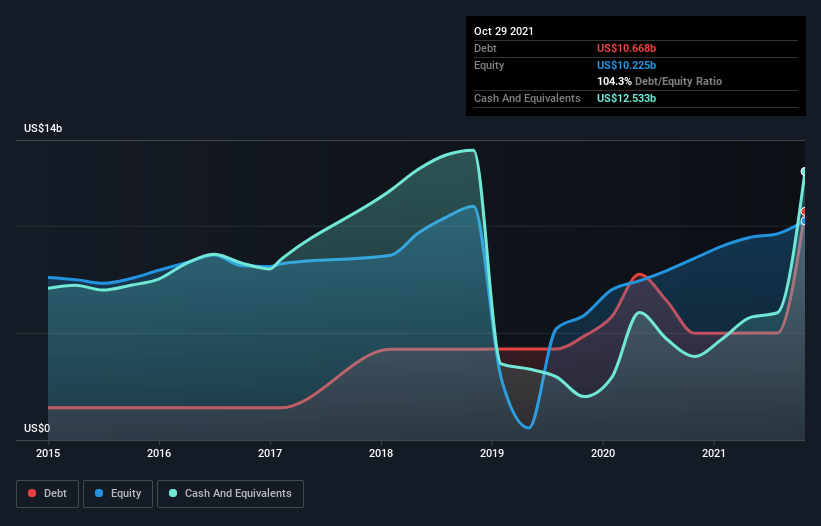- United States
- /
- Software
- /
- NYSE:VMW
These 4 Measures Indicate That VMware (NYSE:VMW) Is Using Debt Safely

Legendary fund manager Li Lu (who Charlie Munger backed) once said, 'The biggest investment risk is not the volatility of prices, but whether you will suffer a permanent loss of capital.' When we think about how risky a company is, we always like to look at its use of debt, since debt overload can lead to ruin. We note that VMware, Inc. (NYSE:VMW) does have debt on its balance sheet. But the more important question is: how much risk is that debt creating?
Why Does Debt Bring Risk?
Debt is a tool to help businesses grow, but if a business is incapable of paying off its lenders, then it exists at their mercy. If things get really bad, the lenders can take control of the business. However, a more common (but still painful) scenario is that it has to raise new equity capital at a low price, thus permanently diluting shareholders. Of course, debt can be an important tool in businesses, particularly capital heavy businesses. The first step when considering a company's debt levels is to consider its cash and debt together.
Check out our latest analysis for VMware
How Much Debt Does VMware Carry?
You can click the graphic below for the historical numbers, but it shows that as of October 2021 VMware had US$10.7b of debt, an increase on US$4.99b, over one year. However, it does have US$12.5b in cash offsetting this, leading to net cash of US$1.87b.

How Healthy Is VMware's Balance Sheet?
We can see from the most recent balance sheet that VMware had liabilities of US$9.81b falling due within a year, and liabilities of US$15.7b due beyond that. Offsetting this, it had US$12.5b in cash and US$2.39b in receivables that were due within 12 months. So it has liabilities totalling US$10.6b more than its cash and near-term receivables, combined.
This deficit isn't so bad because VMware is worth a massive US$49.6b, and thus could probably raise enough capital to shore up its balance sheet, if the need arose. But we definitely want to keep our eyes open to indications that its debt is bringing too much risk. While it does have liabilities worth noting, VMware also has more cash than debt, so we're pretty confident it can manage its debt safely.
Another good sign is that VMware has been able to increase its EBIT by 23% in twelve months, making it easier to pay down debt. When analysing debt levels, the balance sheet is the obvious place to start. But it is future earnings, more than anything, that will determine VMware's ability to maintain a healthy balance sheet going forward. So if you want to see what the professionals think, you might find this free report on analyst profit forecasts to be interesting.
Finally, a business needs free cash flow to pay off debt; accounting profits just don't cut it. VMware may have net cash on the balance sheet, but it is still interesting to look at how well the business converts its earnings before interest and tax (EBIT) to free cash flow, because that will influence both its need for, and its capacity to manage debt. Happily for any shareholders, VMware actually produced more free cash flow than EBIT over the last three years. That sort of strong cash generation warms our hearts like a puppy in a bumblebee suit.
Summing up
While VMware does have more liabilities than liquid assets, it also has net cash of US$1.87b. And it impressed us with free cash flow of US$4.2b, being 191% of its EBIT. So we don't think VMware's use of debt is risky. There's no doubt that we learn most about debt from the balance sheet. But ultimately, every company can contain risks that exist outside of the balance sheet. For example - VMware has 1 warning sign we think you should be aware of.
If, after all that, you're more interested in a fast growing company with a rock-solid balance sheet, then check out our list of net cash growth stocks without delay.
New: Manage All Your Stock Portfolios in One Place
We've created the ultimate portfolio companion for stock investors, and it's free.
• Connect an unlimited number of Portfolios and see your total in one currency
• Be alerted to new Warning Signs or Risks via email or mobile
• Track the Fair Value of your stocks
Have feedback on this article? Concerned about the content? Get in touch with us directly. Alternatively, email editorial-team (at) simplywallst.com.
This article by Simply Wall St is general in nature. We provide commentary based on historical data and analyst forecasts only using an unbiased methodology and our articles are not intended to be financial advice. It does not constitute a recommendation to buy or sell any stock, and does not take account of your objectives, or your financial situation. We aim to bring you long-term focused analysis driven by fundamental data. Note that our analysis may not factor in the latest price-sensitive company announcements or qualitative material. Simply Wall St has no position in any stocks mentioned.
About NYSE:VMW
VMware
VMware, Inc. provides software solutions in the areas of modern applications, cloud management and infrastructure, networking, security, and workspaces in the United States and internationally.
Fair value with limited growth.
Similar Companies
Market Insights
Community Narratives



